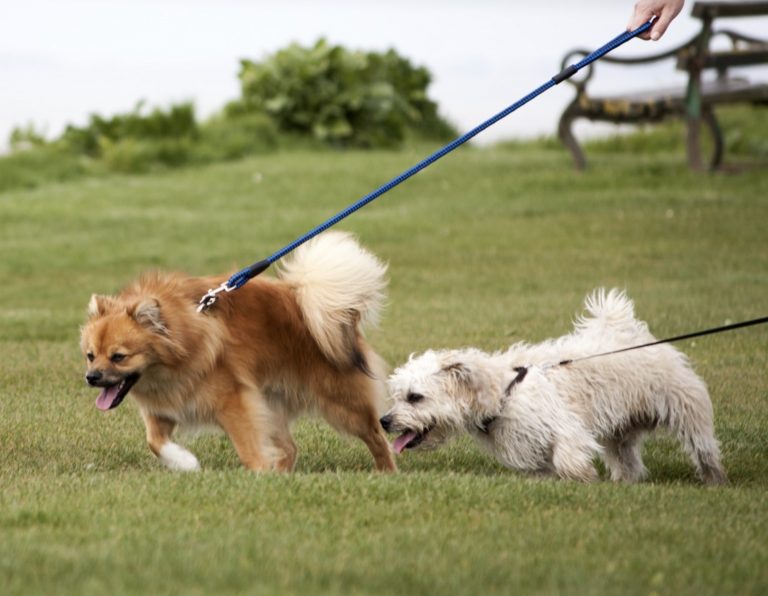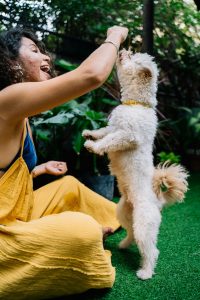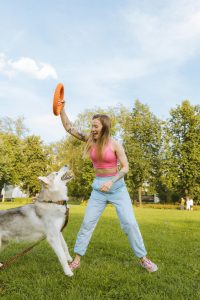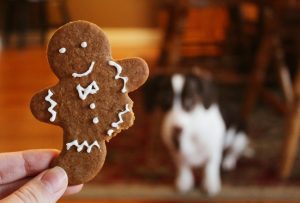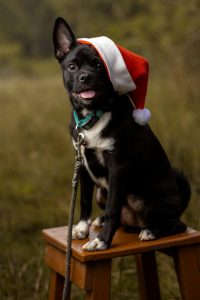Do you want to have enjoyable walks with your dog? Or do you want to endure constant jerking and pulling on a leash? I am sure you prefer an enjoyable normal walk. If nothing else, the constant pulling on a leash can cause severe injuries. It can also lead to choking, strangulation, and many more issues.
There are many ways to stop leash pulling.
Today, we will take a look at one simple trick that you can use in addition to the other training methods.
The Simple Trick to Stop Leash Pulling
The best way to teach your dog to not pull on a leash is to teach him to follow you on a leash. Dr. Ian Dunbar calls it meet the beast problem. For this training method, you have to look at the problem directly.
Or in other words, you cannot teach your dog to stop pulling if you train him on a leash. The trick here is to teach the dog to follow you off-leash. Why? Because once he starts following you off-leash, he will follow you on leash.
Trail following is a great method for preventing leash pulling and easiest off-leash training. All you have to do is go to an open field and teach your dog to follow you.
There are only two rules you should follow. The first one is “Walk away from your dog”. And the second is “keep walking”.
Yes, it is hard and difficult to do. At times you might be tempted to check on your dog and go back. But this open field training for preventing leash pulling is something you should do constantly and persistently.
Here is how to do it. Remember, your dog will deviate, might go too fast or too slow, or she/she might go to the left or right. You do the opposite and quickly. It is all about turn. Look to the side you want your dog.
Practice for more than 5 or 10 minutes. No more than. After that, both you and your dog will be exhausted. Do this open field training a couple of times, and your dog will instinctively start to follow you.
What is the secret and trick? Because you go left/right and change directions, your dog will have to focus on you all the time.
Introducing the leash gradually
You cannot go from pulling on the leash to not pulling on the leash overnight. There are several stages you need to go through.
The first one is following. This is the open field training we talked about above. During this stage, it is important that your dog learns to stay close to you. It works better if you hand feed your dog. Your dog knows food comes from you and will follow you to get his food.
The second step is teaching your dog healing. Or, in other words, walking right by your side.
Once you master these two stages in an open field, you can move to the third stage. This is to introduce the leash as you are healing. If you introduce the leash while healing, your dog is less likely to deviate.
The last stage is teaching your dog to walk by you on a leash.
Understanding Follower State of Mind
Any dog goes through four stages during his day. Those are follow, play, explore, and rest. No matter where they live, dogs have these four stages. They do the same four things every day.
For the most part, dogs follow. They are pack animals. And in the pack, they learn to follow a pack leader. This is the most important part of dog training. Understanding that you should make yourself the pack leader. Most of the problems in a dog’s behavior come from a lack of clarity between follower and leader role.
With a proper leader, dogs feel safe, calm, and they eliminate any anxiety in the world. But the problem is there is no part-time job. You cannot be a part-time leader. You have to lead always. If you let your dog to run around the house with no rules, your dog will start questioning your leading role.
Set boundaries and limits in everything. Do not be surprised if your dog doesn’t listen to you when you are outside on a walk. Why should he? He doesn’t listen to you at home, why should he listen to you outside? Try to remain a calm and confident leader all day long. This way, your dog can relax and trust you.
Even aggression problems stem from the lack of clarity between leader and follower. Have you seen dogs reacting to other dogs during a walk? It is because the dog thinks of himself as the leader. It is a natural instinct to protect the pack whenever they can. So, because your dog thinks of you as a follower, he reacts to other dogs because he wants to protect you.
The second state is play. Dogs are playful animals and it is one of their favorite things to do. But you have to maintain your leadership role during play as well. This means structure during play. For example, if you throw a ball, your dog runs, and you run after him, that changes the whole leader-follower dynamic.
Now let’s talk about the explore state. Exploring doesn’t mean letting your dog wander off and do whatever he wants. That can also change the leader-follow dynamic.
Whenever you let your dog explore, do that in a calm way. If your dog wants to sniff something, put him in a sit position, and then let him sniff. When your dog wants to say hello to people/dogs, put him in sit, and then let him say hello. All of this teaches your dog that you allow them to explore. They should look at you for guidance.
Last, we have the rest stage. Your dogs need plenty of rest. Crate training helps with this stage. Help your dog understand that the crate is a safe and beautiful place where they can sleep and relax.

